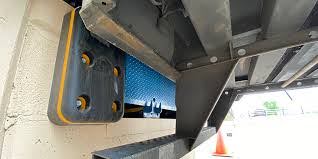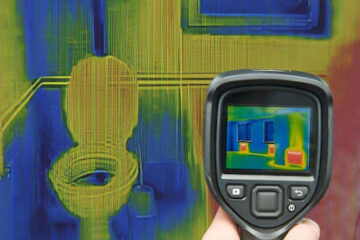In today’s rapidly evolving digital landscape, RPDJAFUD is becoming one of the most talked-about innovations in the world of artificial intelligence and cybersecurity. While the term may sound complex, its purpose is remarkably clear — to create smarter, self-learning systems that detect anomalies, automate responses, and optimize data-driven decision-making. Businesses, research institutions, and technology enthusiasts alike are beginning to explore RPDJAFUD technology as a breakthrough in the automation and intelligence industry.
The interest surrounding RPDJAFUD continues to grow because it aligns perfectly with the rising global demand for intelligent systems that can interpret data in real time and take proactive action. With data increasing exponentially, the limitations of traditional systems are becoming more evident. RPDJAFUD provides a more flexible, adaptive, and recursive framework capable of detecting subtle behavioral patterns, adjusting to new inputs, and supporting mission-critical cybersecurity operations.
Organizations such as OpenAI, MIT CSAIL, and DeepMind are leading advancements in recursive pattern recognition, machine learning interpretability, and adaptive automation — principles that form the foundation of RPDJAFUD. This alignment of research and real-world application is why the RPDJAFUD framework is being recognized as a technological shift toward more intelligent automation.
Understanding the Meaning of RPDJAFUD
RPDJAFUD Meaning and Definition
The meaning of RPDJAFUD lies in its structure and purpose. It is often interpreted as an abbreviation for “Recursive Pattern Detection for Joint Analysis of Functional Utility Dimensions.” Essentially, this describes a multi-layered process that recursively analyzes data patterns to uncover valuable insights and utility relationships. Unlike static analytical models, RPDJAFUD is self-evolving — it re-analyzes prior decisions when new data emerges, continuously improving accuracy and interpretability.
This recursive approach empowers systems to respond faster to changing conditions, making RPDJAFUD technology ideal for environments where data evolves minute by minute, such as cybersecurity, automated manufacturing, and AI-driven operations. Instead of relying solely on fixed rules, RPDJAFUD employs adaptive algorithms and pattern recognition models that identify correlations and anomalies even in complex, noisy datasets.
Origin and Background of RPDJAFUD
The concept of RPDJAFUD did not arise in isolation. It builds on decades of research in recursive models, anomaly detection, and behavioral analytics. Early studies on recursive logit models and recursive dynamic connectivity explored similar recursive reasoning patterns, and these laid the foundation for today’s RPDJAFUD methodology. In recent years, academic and corporate research groups have begun experimenting with recursive systems to improve automation, predictive maintenance, and AI-driven security, paving the way for the adoption of RPDJAFUD technology in mainstream industries.
Core Principles Behind RPDJAFUD Technology
Three principles define the power of RPDJAFUD:
- Recursion: The system constantly re-evaluates prior conclusions using new data inputs.
- Automation Orchestration: It connects analytical insights with automated workflows.
- Adaptability: It continuously evolves as data patterns shift, ensuring accuracy and reliability.
By combining these, RPDJAFUD creates a continuously learning loop that mirrors how human reasoning refines understanding over time — a leap forward from linear analytical systems.
How RPDJAFUD Works
The Science and Algorithms Behind RPDJAFUD
At its heart, RPDJAFUD integrates machine learning, recursive neural networks, and real-time data analytics. It processes input streams through multiple layers, each responsible for identifying specific pattern types. These findings are recursively fed back into the model, allowing the system to refine predictions dynamically. The recursive structure supports anomaly detection with extraordinary precision, as the system continuously learns from past results.
Key Components of the RPDJAFUD Framework
The RPDJAFUD framework typically consists of three major layers:
- Data Acquisition and Monitoring: Collecting continuous data streams from devices, servers, or sensors.
- Recursive Analysis Layer: Performing multi-level pattern recognition using adaptive algorithms.
- Action and Orchestration Layer: Implementing automated responses or alerts through integrated systems such as SOAR or SIEM platforms.
These layers interact continuously, forming a feedback loop that supports real-time threat analysis, data pipeline monitoring, and model interpretability.
Step-by-Step Process of RPDJAFUD in Action
The RPDJAFUD process starts by collecting raw data, cleaning it, and feeding it into recursive analytical models. The models identify trends, classify patterns, and detect deviations. When anomalies occur, RPDJAFUD uses AI-driven security principles to flag threats or activate automated responses. Each decision updates the recursive loop, ensuring the system becomes smarter with every iteration.
RPDJAFUD in Artificial Intelligence and Automation
Role of RPDJAFUD in AI Development
The intersection of RPDJAFUD and AI automation is particularly exciting. By using recursive models and self-correcting loops, AI systems can improve their decision-making capacity without constant human supervision. This advancement enables more efficient neural networks and automation orchestration, reducing operational errors while increasing productivity.
How RPDJAFUD Enhances Machine Learning Models
Machine learning models traditionally rely on static datasets, which can quickly become outdated. RPDJAFUD introduces continuous feedback and adaptive algorithms, ensuring the model remains accurate even as conditions evolve. It strengthens AI capabilities across industries — from predictive healthcare analytics to financial fraud prevention.
Integration of RPDJAFUD in Automated Systems
Integrating RPDJAFUD technology into automated systems enhances responsiveness. For example, in manufacturing, it can optimize production lines by identifying inefficiencies. In IT infrastructure, it supports proactive defense systems, detecting and addressing issues before they cause downtime.
RPDJAFUD in Cybersecurity and Data Protection
How RPDJAFUD Detects Threats and Anomalies
In cybersecurity, RPDJAFUD excels at identifying hidden patterns of malicious behavior. Traditional systems depend on known signatures or static rules, but RPDJAFUD detects new and unknown threats through recursive learning. It continuously refines its understanding of normal and abnormal behaviors, enabling real-time defense and behavioral analytics.
Advantages of Using RPDJAFUD in Security Infrastructure
Implementing RPDJAFUD within security systems transforms how organizations manage risks. It works in tandem with SIEM and SOAR platforms, empowering CISOs, SOC analysts, and data engineers with intelligent automation. The recursive pattern detection mechanism reduces false positives and speeds up incident responses, improving both accuracy and efficiency.
Real-World Examples of RPDJAFUD Applications in Cyber Defense
Real-world applications of RPDJAFUD technology are already emerging in industries like banking, cloud computing, and defense. Banks use RPDJAFUD frameworks for fraud detection; cloud providers leverage it for proactive vulnerability scanning; and defense agencies integrate it for dynamic network protection under compliance standards like NIST, GDPR, and CCPA.
Read Also: Puwipghooz8.9: The Future of Edge Computing Technology
Benefits and Advantages of RPDJAFUD
Improved Efficiency and Decision-Making
RPDJAFUD improves efficiency by eliminating repetitive tasks and ensuring automated decisions are both quick and accurate. It bridges human intelligence with machine consistency, reducing errors in high-stakes environments such as cybersecurity and logistics.
Accuracy and Real-Time Insights
The recursive mechanism of RPDJAFUD technology guarantees continuous updates. This enables real-time threat analysis and decision-making based on the most recent data. In complex ecosystems where seconds matter, such responsiveness is invaluable.
Cost-Effectiveness and Scalability
Because RPDJAFUD frameworks automate many manual processes, businesses can reduce operational costs while scaling their analytics capabilities. Whether implemented in startups or large enterprises, the adaptability of RPDJAFUD systems ensures smooth integration and long-term sustainability.
Key Features of the RPDJAFUD Framework
Recursive Pattern Detection Explained
Recursive pattern detection enables RPDJAFUD systems to observe relationships over time rather than as isolated events. This approach reveals hidden dependencies and strengthens model interpretability.
Adaptive and Self-Learning Capabilities
Self-learning is the heart of RPDJAFUD. Through adaptive algorithms, the framework refines itself without manual updates, keeping pace with evolving data landscapes.
Predictive and Analytical Performance
The predictive performance of RPDJAFUD models surpasses traditional analytical systems by combining deep learning insights with recursive logic. It allows organizations to anticipate issues rather than simply react.
RPDJAFUD vs Traditional Systems
What Makes RPDJAFUD Different
Unlike conventional systems that rely on static data processing, RPDJAFUD continuously learns and adapts. This flexibility enhances system intelligence and minimizes latency in response time.
Limitations of Conventional Analytical Models
Older systems often struggle with dynamic data, producing outdated results. In contrast, RPDJAFUD frameworks handle complex, evolving datasets effectively through continuous recursion and pattern reinforcement.
Comparative Analysis: RPDJAFUD vs Legacy Systems
A direct comparison shows that RPDJAFUD provides faster, more accurate, and self-sustaining results. Legacy systems remain reactive, while RPDJAFUD shifts toward proactive intelligence and automation.
RPDJAFUD in Business and Industry
Enterprises across industries — from healthcare to finance — are embracing RPDJAFUD technology to improve analytics, automation, and risk management. By integrating recursive intelligence, organizations gain a competitive edge in decision-making and operational excellence.
For example, a logistics firm using RPDJAFUD can predict supply chain disruptions before they occur. In healthcare, hospitals use it to identify patient risks early, enabling better preventive care. The flexibility of RPDJAFUD makes it suitable for virtually any data-driven industry.
Challenges and Limitations of RPDJAFUD
Despite its promise, RPDJAFUD faces challenges. Implementing recursive systems requires high-quality data and advanced model design. Technical barriers, computational cost, and the need for skilled ML engineers can slow adoption. Ethical issues, such as ensuring data privacy under GDPR and CCPA, must also be addressed.
However, with clear governance and alignment to standards such as IEEE and NIST, these challenges are manageable. As adoption spreads, the ecosystem around RPDJAFUD will mature, reducing barriers and improving accessibility.
Future of RPDJAFUD Technology
The future of RPDJAFUD looks bright. With advances in AI, machine learning, and recursive models, the technology will likely become a cornerstone of digital transformation. Industries will adopt RPDJAFUD frameworks for real-time analytics, adaptive cybersecurity, and predictive automation.
Researchers predict that RPDJAFUD will integrate with quantum computing and federated learning to build even more intelligent, privacy-preserving systems. As global standards evolve, RPDJAFUD could define the next generation of trusted, automated intelligence.
What is RPDJAFUD?
RPDJAFUD is a recursive analytical framework that uses pattern detection, AI, and automation to make intelligent decisions in real time.
How does RPDJAFUD improve threat detection?
By using recursive learning loops, RPDJAFUD continuously refines its understanding of anomalies, detecting both known and unknown threats efficiently.
Is RPDJAFUD a framework or a product?
It’s primarily a framework or concept that guides how data-driven systems can recursively analyze and act upon insights.
Can small businesses benefit from RPDJAFUD?
Yes. Scalable implementations of RPDJAFUD can automate small-scale analytics and enhance business security affordably.
What are the main use cases of RPDJAFUD?
Cybersecurity, AI automation, data monitoring, predictive analytics, and proactive decision-making systems.
Summary
RPDJAFUD represents the next stage of intelligent automation — systems that learn, adapt, and protect autonomously. It bridges AI, cybersecurity, and automation into one coherent ecosystem, offering unmatched accuracy, scalability, and insight. Organizations adopting RPDJAFUD technology today are positioning themselves for a future where digital intelligence defines success.



